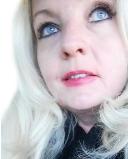Neurodiversity
Synesthesia and Neurodiversity
Those possessing the trait deserve the advocacy of the new movement.
Posted January 27, 2015

Synesthetes should identify with and be protected by the neurodiversity movement.
Neurodiversity is a term that was coined about 20 years ago by autism advocate Judy Singer, an Australian social scientist who is herself on the autism spectrum. It is defined as “the whole of human mental or psychological neurological structures or behaviors, seen as not necessarily problematic, but as alternate, acceptable forms of human biology.”
The term first appeared in an article in The Atlantic in 1998, in which journalist Harvey Bloom said, “Neurodiversity may be every bit as crucial for the human race as biodiversity is for life in general. Who can say what form of wiring will prove best at any given moment? Cybernetics and computer culture, for example, may favor a somewhat autistic cast of mind.”
A movement grew around this term that was largely internet-based and supported by the autistic and their advocates. But it has now spread to other “neurological outliers” or those with different brains such as the dyslexic, those with ADHD, and those with bipolar disorder, all of whom have some advantages “normal” people do not possess.
In his groundbreaking 2010 book, Neurodiversity: Discovering the Extraordinary Gifts of Autism, ADHD, Dyslexia, and Other Brain Differences, psychologist Thomas Armstrong, Ph.D. makes the case for considering the unique strengths people with neurological differences bring to the table.
“Up until now, we’ve tended to use heavily negative medicalized language to speak of brain diversity but generally positive language to talk about cultural diversity and biodiversity.
“For the sake of our well-being and health as a society and culture as a whole, it’s essential that we start using more positive language to talk about the brain in its many variations.”
The German technology company SAP made headlines around the world last year when it announced its intention to hire 850 autistic people as software engineers and product testers. According to Reuters, “the SAP spokesman said the company aimed to reflect the proportion of people diagnosed as autistic in society within its 65,000-strong workforce - or about 1 percent.” The U.S. Centers for Disease Control and Prevention report that 1 in every 88 children in the United States is now diagnosed with autism.
And Berlin’s Auticon exclusively hires the autistic as software testers. Both German companies point to the excellent ability those on the spectrum have with concentration and analyzing details as the reason for their interest.
Bloomberg BusinessWeek recently featured another group of people with differences that companies may want to seek out in their resume submissions: synesthetes. In an article titled “The Mind’s Eye: Synesthesia Has Business Benefits” they featured such diverse talents as Ford Motor’s synesthetic engineer, Michael Haverkamp, a whiz at streamlining cars and improving user experience, to superstar synesthetic music producer and performer Pharrell Williams, who sees colored music to Patricia Lynne Duffy, a leader in the United Nations Language and Communications Programme who never forgets a name due to her enhanced synesthetic memory and olfactive branding experts Samantha and Dawn Goldworm, who scent major fashion shows with their synesthetic abilities.
Perhaps Wired magazine’s Steve Silberman said it best in a 2013 article: “In forests and tide pools, the value of biological diversity is resilience: the ability to withstand shifting conditions and resist attacks from predators. In a world changing faster than ever, honoring and nurturing neurodiversity is civilization’s best chance to thrive in an uncertain future.”


